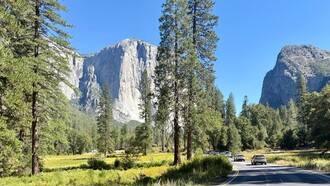While attending a friend’s birthday in Somerset, we heard some lively discussions among fellow guests about The Newt, a new hotel nearby. Somerset, with its mixture of rolling hills, small villages, and historical sites, has always been known for its calm and slightly rural atmosphere. It is famous for cider-making and ancient landmarks, and visitors come for a sense of place that feels anchored in history. Curious to see if The Newt lived up to its reputation, we decided to book a stay.
The Newt, which opened in 2019 under the ownership of Karen Roos, has been developed from Hadspen House, a Georgian manor. The estate has been carefully restored, preserving much of its 18th-century charm while incorporating modern elements. The design merges the building’s historic roots with thoughtful, contemporary touches. The result is a place where old and new meet in an understated but elegant way.
The rooms and design
Our room was in The Hayloft, a former farm building dating back to the 18th century. Located next to Hadspen House, it is a short walk from the formal gardens. The Hayloft used to store hay, but it’s been converted into a comfortable and spacious guest room. The king bed is set on a mezzanine floor, with a sitting room below that includes a wood-burning stove and a small bar. The bathroom, with its roll-top bath and walk-in shower, added a practical touch. One of our favorite parts of the stay was the private terrace, which gave us a quiet outdoor space to sit and look over the surrounding greenery.
Eating at The Newt
The hotel has two restaurants: The Botanical Rooms and The Garden Café. The botanical rooms focus on using produce from the hotel’s own gardens, as well as other local sources. The emphasis is on simple, fresh ingredients. We started with a garden pea velouté, followed by a dayboat fish with grilled squid and artichokes. The dishes were carefully prepared and highlighted the natural flavors of the ingredients.
We also tried The Farmyard Restaurant, located in a converted stable yard, where the menu is similarly tied to local produce. The poultry dish we ordered came from a nearby farm, served with vegetables grown on the estate. The space itself, with its exposed brick and wooden beams, creates a relaxed but thoughtful setting.
Visiting Wells Cathedral
We spent a day exploring Wells Cathedral, one of Somerset’s most famous landmarks. Built in a Gothic style, the cathedral is known for its detailed stonework and the impressive scissor arches that support the structure. The medieval builders achieved a high level of craftsmanship, evident in the intricate carvings throughout the cathedral.
One of the memorable parts of the visit was the Wells Clock, which still functions after more than 600 years. The clock features a display of jousting knights that moves on the hour. We also visited the Chapter House, where the scissor arches have become a symbol of the cathedral’s unique architecture.
Stourhead: a historical landscape garden
We also made time to visit Stourhead, an 18th-century garden famous for its classical design. The estate is known for its carefully laid-out paths, temples, and grottos, all centered around a large lake. Walking around the lake, we passed by The Pantheon and The Temple of Apollo, both modeled after ancient Greek and Roman architecture. The garden is less about bright floral displays and more about creating a sense of harmony between man-made structures and the natural landscape.
Somerset: a mix of landscape and history
Somerset itself has a long history. The region is home to prehistoric landmarks like Glastonbury Tor, as well as more recent agricultural traditions, particularly cider-making. The countryside is dotted with stone villages, many of which have remained largely unchanged for centuries. Visitors to the region come for the slow pace of life, the landscape, and a connection to England’s rural past.
Final thoughts
Our stay at The Newt provided a good balance between relaxation and exploration. The rooms were comfortable, and the grounds of the estate gave us space to wander. The combination of local food, historical architecture, and peaceful surroundings made it a memorable visit.















